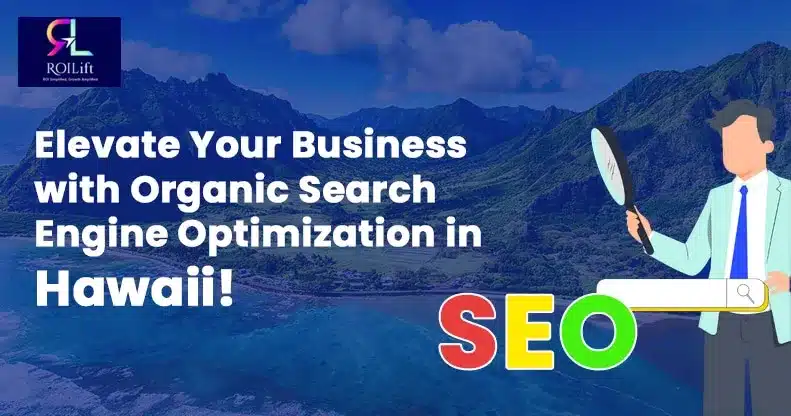Are you looking for Organic Search Engine Optimization in Hawaii? If yes, your search ends here at ROILift. We specialize in helping businesses develop more quickly online. Search engine optimization, or SEO, is essential for Hawaii businesses looking to increase sales, leads, and targeted visitors. Our thorough guide will teach you everything you need to know about using SEO to increase your search engine presence and reach a wider audience in Hawaii.
What is SEO? Why is SEO Important for Hawaii Businesses?
The technique of raising a website’s rankings for relevant search queries on search engine results pages (SERPs) is known as search engine optimization or SEO. SEO is important for Hawaiian businesses for the following reasons:
- Search engines like Google, which handle more than 70% of all online searches, send customized organic traffic to your website using SEO. For Hawaiian businesses, better-focused traffic translates into more leads and potential clients.
- Local brands benefit from greater visibility, credibility, and trust when their websites rank higher for Hawaiian keywords and terms. Top-ranked results are naturally trusted by users.
- Local consumers looking for goods or services in Hawaii can find businesses that meet their needs with the use of SEO. More qualified leads and sales conversions result from this.
- An improved user experience is offered by a search-engine-optimized website, which has quick load speeds, relevant data, and simple navigation. This enhances consumer loyalty and the image of the brand.
- Effective SEO offers useful information and statistics about how potential customers in Hawaii are looking for your goods and services online. Better targeting and marketing optimization are made possible by this.
In Hawaii, How Do Search Engines Like Google Operate?
Knowing the fundamentals of how search engines work, particularly Google, which accounts for more than 90% of all searches, is important for developing successful SEO strategies:
- Indexing and Crawling: Search engine crawlers search the web continuously for fresh and updated content. Some add information to the search engine’s index after reading website content and clicking on links.
- Ranking and Processing: The relevance and authority of each page for search queries are assessed by algorithms that examine websites and webpages in the index while taking into account hundreds of ranking indicators. Pages that are considered to be the most trustworthy, relevant, reliable, and helpful to users will rank higher.
- Providing Outcomes: The best-matching webpages are quickly displayed to customers who search for the context that is relevant to their needs. This is because search engines utilize algorithms to determine which pages will be most helpful. The most traffic is generated by pages that appear on the first page of search results.
Important SEO Techniques
To achieve effective SEO, a website must have both on-page and off-page efforts, such as marketing and link development. We should follow these recommended practices to achieve the best possible SEO results:
- On-Page SEO
- Technical Search Engine Optimization
- Marketing Content and Keywords
- Developing Links
- Local Search Engine Optimization
Conclusion
Are you ready to use organic SEO to grow your company? Helping Hawaii businesses succeed in the digital world is our passion at ROILift. Allow us to assist you in growing your business sustainably, gaining more local clients, and improving your internet presence.
If you want to find out more about how our organic SEO services in Hawaii do businesses, get in touch with us right now. Together, we can begin your path to greater online success.



